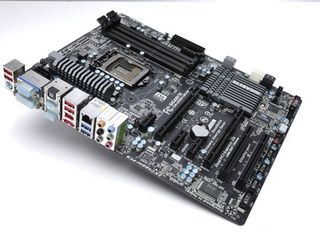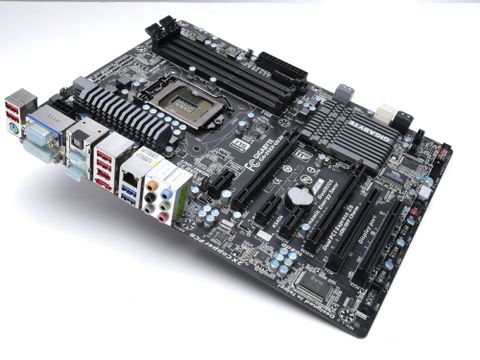Why you can trust TechRadar

Bundled along with the usual suites of overclocking tools there's an app which we particularly liked for the Gigabyte Z68X-UD3H-B3, although we're not entirely sure when we'd make use of it.
Cloud OC enables you to take control of BIOS settings remotely via Bluetooth (if you have a separate adaptor) or the web. It's a neat trick, similar to that pioneered by Asus on its ultra-high end Republic of Gamers' boards.
But the real star of the show here, as it will be for all Z68 motherboards, is Lucid's Virtu technology. Once again this deceptively simple piece of software, which enables you to use the integrated graphics core without removing your gaming GPU, proves itself to be a reliable and invaluable tool.
At least, it is if you do any video editing, where it can accelerate certain encoding applications by stupid amounts. In our tests, it was almost five times faster than encoding by CPU alone.
But even if you don't do video editing it will still power-down your discrete card when its 3D chops aren't needed, making for a much greener gaming machine anyway.
Elsewhere, Gigabyte's Z68X-UD3H-B3 puts in an equally solid performance. We could wish for more USB ports and SATA slots, but we'd probably have to pay a lot more for them. We also quite like the familiar feeling old school BIOS option, though the lack of UEFI is still rather strange.
There is one issue, however. The PCIe slots scale back to just 8x, rather than 16x lanes if both are used at the same time. SLI or Crossfire should be fine for most purposes, but you might start to see that bandwidth bottleneck kicking in if you're planning to set up dual graphics for multi-monitor resolutions with lots of image quality settings turned on.
But if you're only planning to use one card, you might want to look at the ASRock Z68 Pro 3. The Gigabyte Z68X-UD3H-B3 is the better-built board, but ASRock's is almost £40 cheaper.
We liked
At less than £150 this seems like a good value board, considering it has Gigabyte's Ultra Durable three components and lots of flexibility for overclocking. Lucid's Virtu application for switching between integrated and discrete graphics again proves itself admirably, and extras such as Cloud OC are fun to have.
We disliked
It's probably going to be worth waiting to see how prices calm down around the Z68 chipset. There are other, cheaper examples available already, and the eight lane PCI-Express limitation here might be a cost cutting measure too far if you're planning for dual GPUs in the future.
Verdict
Two USB 3.0 ports, support for SATA 3 drives, PCI-Express slots, premium grade components and a back-up BIOS combine with slick extras in the shape of Lucid's Virtu and Intel's Smart Response Technology to make the Gigabyte Z68X-UD3H-B3 a very tempting offering indeed.

Scientists inch closer to holy grail of memory breakthrough — producing tech that combines NAND and RAM features could be much cheaper to produce and consume far less power

Google adds biometric verification to Play Store to keep your in-store wallet safe

Quordle today – hints and answers for Wednesday, April 17 (game #814)
